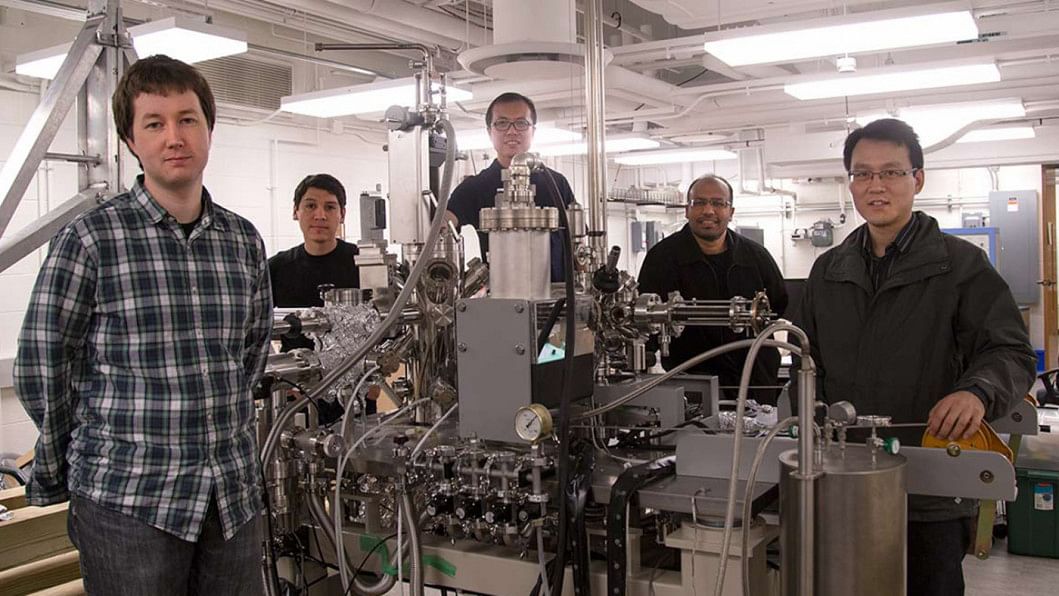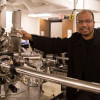Time for faster devices

The discovery of an elusive particle theorised 85 years ago would eventually take the world to a new dawn of super fast electronics and computing.
"Mass-less Weyl fermions may potentially lead us to a new era in electronics once scientists work out the way to control and manipulate them … ," says Prof M Zahid Hasan, a Bangladeshi physicist at Princeton University, who led an international team to the discovery of the particle.
If that is achieved, electronic devices would be faster, be more energy efficient, and produce less heat since they would be run by mass-less electrons.
As the Weyl fermions, unlike electrons, can go through obstacles and change course, computing, as we know it, could change.
It could be the "motherboard for future electronic devices", because they combine high mobility with topological protection, he said.
Hasan and his team of scientists revealed their discovery this month.
In an interview with The Daily Star (via email) M Zahid Hasan hopes that future electronics would be replaced by "Weyltronics", a term coined by him.
"In Weyltronics, mass-less super-fast Weyl fermions will replace the slow moving electrons. A Weyl fermion is like half-of-an-electron. In early universe, two Weyl fermions combined to create one electron. Really cool stuff!" the physics professor told The Daily Star.
"Although at this stage it is a physics discovery, in the longer run it can lead to some cool devices."
"The physics of the Weyl fermion are so strange, there could be many things that arise from this particle that we're just not capable of imagining now," said Hasan, also the Principal Investigator of the Princeton's Laboratory for Topological Quantum Matter and Spectroscopy.
The Weyl fermion was discovered inside a synthetic metallic crystal called tantalum arsenide (TaAs). Hasan and his team bombarded TaAs crystal with a beam of photons (particles of light) to discover Weyl fermions.
Tantalum's main use today is in tantalum capacitors in electronic equipment such as mobile phones, video game systems and computers. Highly corrosion-resistant hard, blue-grey, lustrous transition metal -- Tantalum -- is also used for medical implants and bone repairs.
Hasan, who hails from Gazipur of Bangladesh, said electricity in these crystals could theoretically move 1,000 times faster than in conventional semiconductors, "and the crystals can be improved to do even better".
The upshot could be faster electronics that consume less energy.
"This is really great news for developing new forms of electronics and computing."
The fact that Weyl fermions have no mass suggests that they could shuffle electric charge inside electronics far more quickly than electrons can, Hasan explained.
Another potentially useful quality of Weyl fermions is that they cannot move backwards. Instead of bouncing away from obstacles, they zip through or go around roadblocks.
In contrast, electrons can scatter backwards when they collide with obstructions, hindering the efficiency of their flow and generating heat, he adds.
"Weyl fermions could be used to solve the traffic jams that you get with electrons in electronics -- they can move in a much more efficient, ordered way than electrons," said Hasan, who was listed in the Thomson Reuters' World's Most Influential Scientific Minds-2014.
Hasan said, "Weyl fermions were predicted by Hermann Weyl in 1929 [a mathematician and physicist and colleague of Albert Einstein at Princeton since 1933] in connection to an alternative theory of gravity. Since then there have been many theoretical efforts to realise them in high energy particle physics and condensed matter physics."
"After many years of thinking only last year we got a theoretical clue where it might be found in nature and we quickly wrote up a paper in a Nature journal summarising the idea that TaAs would be a potential platform for capturing Weyl Fermions and we also described how to detect them" Hasan said.
The research paper, "Discovery of Weyl fermions and topological Fermi arcs" was then published on July 16 online on Science.
Hasan recalls in 2014, he and then a Princeton student Su-Yang Xu, working with Hsin Lin of National University of Singapore teamed up to theoretically investigate properties of TaAs class of compounds in connection to their earlier work on topological insulators.
In their theoretical studies, they discovered that these compounds host Weyl fermions in bulk.
Hasan received funding to carry out the proposed experiments through Gordon and Betty Moore Foundation. Gordon Moore is the founder of Intel and Betty is his wife.
After about a year of painstaking work, they confirmed that the bulk in TaAs had the right conditions required for Weyl fermions to be generated in the material.
"This is the first ever observation of Weyl fermions in all of physics," Hasan said. "We have given three experimental proofs for its existence -- and all three are the key signatures of the particle."
Hasan did his SSC from Dhanmondi Government Boys High School and HSC from Dhaka College with outstanding results. He studied at the University of Texas in Austin and got his PhD from Stanford University.
He joined Princeton as a lecturer. Now, he is a professor of Physics with a specific interest in the field of Quantum Condensed Matter Physics at the university.
His research work features in Physics Today, Nature News, Science News, New Scientist, Scientific American, and Physics Worlds.

 For all latest news, follow The Daily Star's Google News channel.
For all latest news, follow The Daily Star's Google News channel. 




Comments